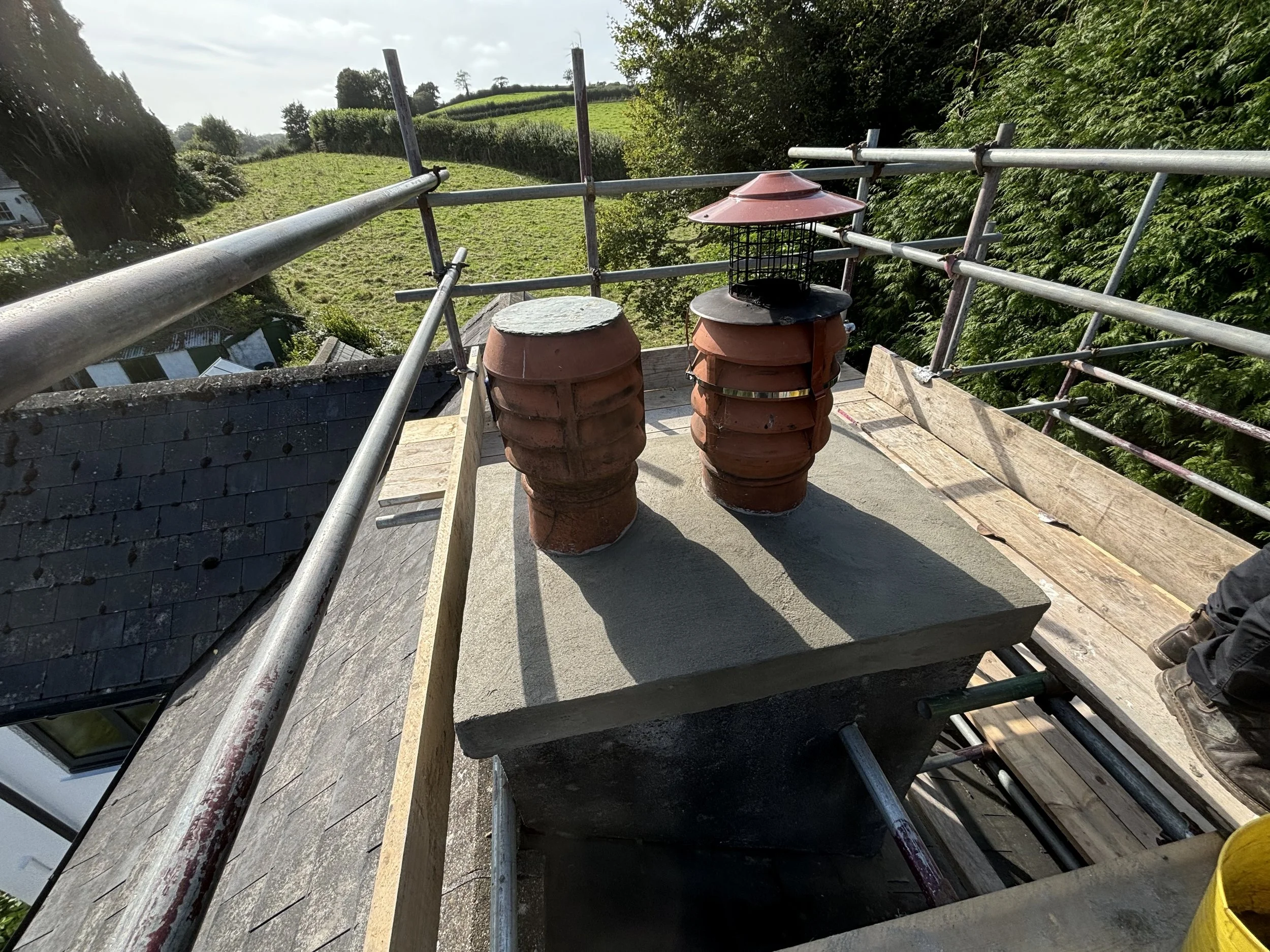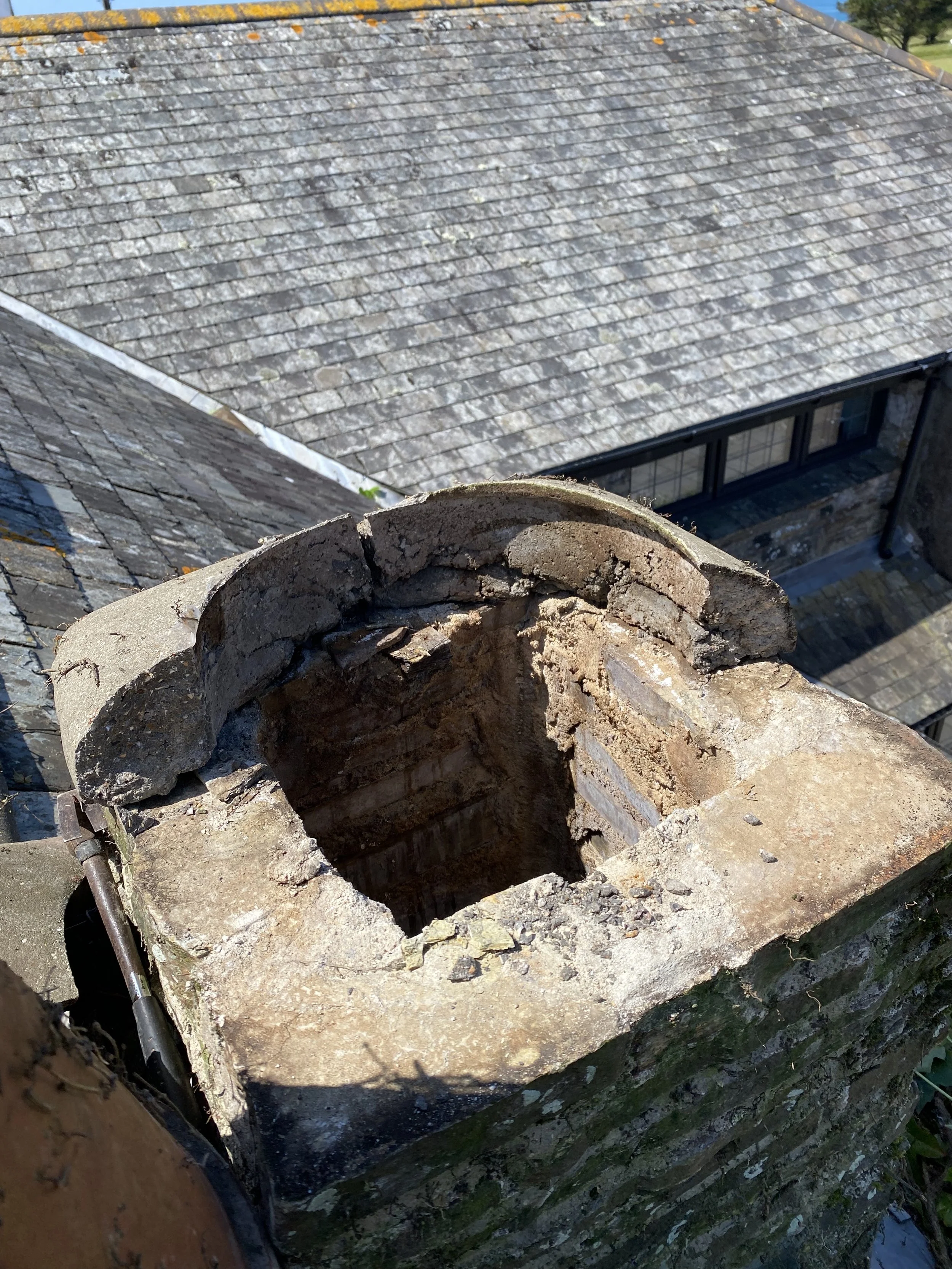Chimney Repairs: What’s Worth Fixing vs. When to Consider Removal
I get a lot of calls from people asking, “Is it worth fixing my chimney, or should I just get rid of it?” And honestly? It depends. Some issues are a quick fix—like replacing a missing pot or sorting out a bit of crumbling mortar. But if your chimney is in bad shape, or you don’t even use it anymore, removing it might be the better (and cheaper) option in the long run.
The key is knowing when a repair makes sense and when you’re just throwing money at something that’s past saving. In this post, I’ll walk you through the common chimney problems, how much repairs cost, what removal involves, and whether you need permission to take a chimney down. Hopefully, by the end, you’ll have a much clearer idea of what’s best for your home. Let’s get into it!
Common Chimney Problems & Their Solutions
Over the years, I’ve seen just about every chimney issue you can imagine. Some are minor and easy to sort, while others are a warning sign of bigger trouble. Here’s a breakdown of the most common problems, what can be fixed, and when you might need to think about a bigger job.
Cracked or Damaged Chimney Stack
Your chimney stack is the part that sticks out above your roof, and because it’s constantly exposed to the weather, it takes a beating. Cracks in the brickwork or stone might not seem like a big deal at first, but if left too long, water will seep in, making the damage worse—especially in winter when it freezes and expands.
✅ Worth fixing? Yes, if the cracks are small. Repointing (replacing the damaged mortar) or sealing up minor damage can add years to your chimney’s life.
❌ Time to consider removal? If large sections of brickwork are crumbling, or the chimney is leaning, repairs might cost more than they’re worth. In that case, removing or reducing the stack could be the safest option.
Leaking Chimney
A leaking chimney is a common headache for homeowners. Water can sneak in through cracks, broken flashing (the seal between your chimney and roof), or even straight down the flue if there’s no cap on top. The result? Damp patches on walls or ceilings, musty smells, or even plaster damage inside your home.
✅ Worth fixing? Absolutely. In most cases, a proper inspection will find the cause, and it’s often something simple like replacing flashing, repointing, or fitting a new chimney cowl to stop rain getting in.
❌ Time to consider removal? If your chimney hasn’t been used in years and is causing ongoing damp issues, getting rid of it might be the best long-term solution.
Loose or Missing Chimney Pots
Chimney pots aren’t just for looks—they help with airflow and keep debris (and birds) out. If yours is cracked, loose, or missing, it’s an easy fix. But if the top of your chimney is in bad shape, that’s a different story.
✅ Worth fixing? If it’s just the pot, swapping it for a new one or fitting a cap is a quick and affordable job.
❌ Time to consider removal? If the top section of the chimney is falling apart along with the pot, a partial removal or rebuild might be the safer bet.
Damaged Flaunching & Mortar Joints
Flaunching is the cement bedding that holds your chimney pot in place. Over time, it cracks and crumbles, making the pot wobbly and allowing water to get in. The mortar joints between bricks also wear away, especially in older homes.
✅ Worth fixing? 100%. Repointing mortar or repairing flaunching is a small job that can save you from bigger issues later on.
❌ Time to consider removal? If the whole top section of the chimney is deteriorating and repairs keep adding up, removal could be the better investment.
Structural Instability
If your chimney is leaning or looks like it’s separating from the rest of the house, that’s a serious red flag. It could be down to old age, weather damage, or even poor construction from the start. Either way, ignoring it isn’t an option.
✅ Worth fixing? Only if the problem is caught early. Structural issues sometimes require reinforcement with steel brackets or rebuilding sections of the chimney.
❌ Time to consider removal? If the damage is severe, repairs might not be cost-effective or safe in the long run. In some cases, taking the chimney down—either partially or fully—is the best move.
Cost Comparison: Chimney Repair vs. Chimney Removal
One of the biggest questions homeowners have is, “Will it cost me more to fix my chimney or just get rid of it?” And the answer? It depends on the extent of the damage, the size of the chimney, and how much work is needed.
To make things clearer, here’s a breakdown of the typical costs for both repair and removal in the UK.
How Much Does It Cost to Repair a Chimney?
Repair costs vary depending on the type of damage, the materials needed, and how tricky the job is. Here’s a rough guide to what you might expect to pay:
For smaller fixes like repointing or replacing a chimney pot, repairs are well worth it. But when you’re looking at a full rebuild, the costs add up—especially if your chimney isn’t essential to your home’s heating.
How Much DOes It Cost to Remove a Chimney?
If your chimney is causing more problems than it’s worth, removal might be the better option. But how much will it set you back? That depends on whether you’re taking down just the stack (the part above the roof) or removing the whole thing down to the ground floor.
Taking down just the stack is the cheapest option and works well if you’re dealing with an unstable or leaking chimney but still want to keep the fireplace below. Full removal is a bigger job, often requiring structural support to be added where the chimney breast was.
Is It Cheaper to Repair or Remove a Chimney?
Here’s the key takeaway:
If the damage is minor (like repointing or replacing a chimney pot), repairing is the more cost-effective option.
If the chimney needs major structural work, removal might be cheaper in the long run—especially if you don’t use it.
If you still use your chimney for a stove or fire, repairing is usually the way to go, since removal would mean giving up your fireplace.
Ultimately, it’s about balancing cost with how much you actually need, use and even like your chimney or fireplace. If it’s a central part of your home, fixing it makes sense. If it’s just sitting there causing issues, removing it could save you money down the line.
Do I Need Permission to Remove a Chimney in the UK?
Chimney removal might seem straightforward, but there are a few legal boxes to tick before getting started. While you usually won’t need planning permission, there are certain situations where you might—especially if you live in an older or listed property.
Planning Permission: Do You Need It?
For most houses, planning permission isn’t required. If you’re taking down a chimney on a standard home that isn’t listed or in a conservation area, you’re free to go ahead.
However, if your property is listed or in a protected area, your local council may have strict rules about altering its appearance. In those cases, you’ll need to get approval before any work begins.
Building Regulations: What You Need to Know
Even if planning permission isn’t required, building regulations still apply. Since a chimney is part of your home’s structure, removing it affects stability and needs to be done properly.
Here’s what to consider:
Removing a chimney stack – Taking down just the section above the roof is fairly simple, but you may need to patch up the roof afterward.
Removing a chimney breast – If you’re taking out the internal part of the chimney, the weight above it (like the remaining stack) will need support—usually with steel beams. A building control officer will need to sign off on this.
Shared chimneys – If you’re in a semi-detached or terraced house, you might share a chimney with your neighbour. That means you’ll need to follow the Party Wall Act, which involves notifying them before making any structural changes that could affect their side.
Best Advice? Check Before You Start
Even if your house doesn’t fall under special restrictions, it’s always worth double-checking with your local council or a building control officer. It’s a quick step that can save a lot of hassle down the line.
Key Considerations Before Deciding
Before making a final decision about your chimney repair or removal, here are a few things to keep in mind:
Safety – If your chimney is unstable, removal might be the safest option. But if the structure is solid and just needs minor work, a repair could be the better choice.
Home Value – A working chimney adds character and can boost property value. If you plan to sell in the future, consider whether removing it will affect appeal.
Space & Heating – If you use a stove or open fire, you’ll need to keep the chimney. But if it’s unused, removing the breast could free up space for storage or home improvements.
Long-Term Costs – A chimney that needs constant repairs can be a financial drain. If issues keep coming back, removal could be a more cost-effective solution.
Repair or remove? Your next steps
If you’re unsure what’s best for your home, getting expert advice is the next step. Every chimney is different, and what works for one house might not be right for another. That’s where I come in.
Need a Professional Opinion? Let’s Chat!
I’ve worked on all kinds of chimneys—big, small, old, new, solid, and crumbling. Whether you need a quick repair, a full rebuild, or advice on removal, I’ll give you an honest assessment and a fair price. No pushy sales, no nonsense—just straight-up advice from someone who knows their stuff.
If you’re in South East Cornwall or South Devon and need a chimney expert you can trust, get in touch today. Give me a call, drop me a message, or request a free quote—I’m happy to help!













